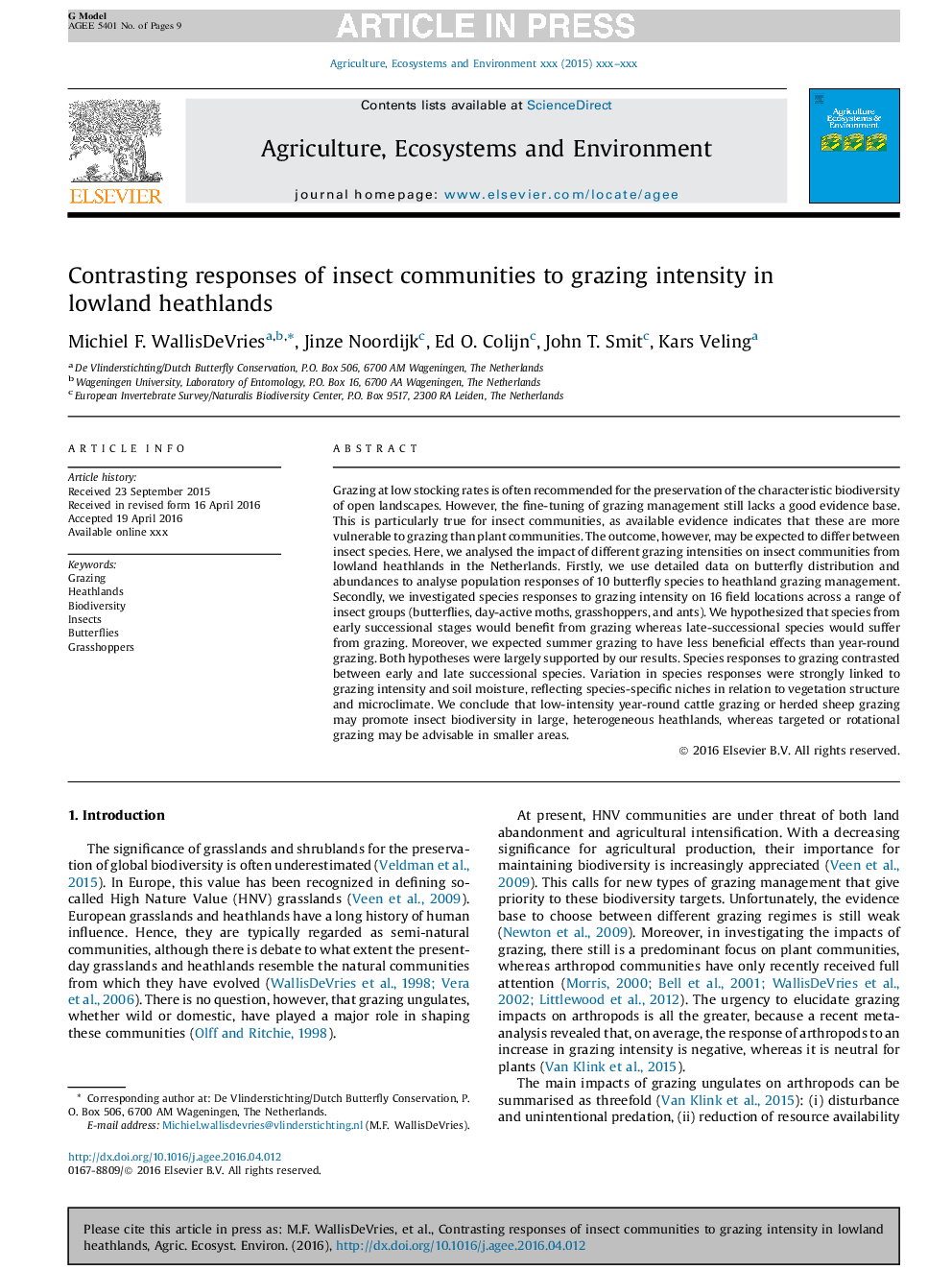| Article ID | Journal | Published Year | Pages | File Type |
|---|---|---|---|---|
| 5538125 | Agriculture, Ecosystems & Environment | 2016 | 9 Pages |
Abstract
Grazing at low stocking rates is often recommended for the preservation of the characteristic biodiversity of open landscapes. However, the fine-tuning of grazing management still lacks a good evidence base. This is particularly true for insect communities, as available evidence indicates that these are more vulnerable to grazing than plant communities. The outcome, however, may be expected to differ between insect species. Here, we analysed the impact of different grazing intensities on insect communities from lowland heathlands in the Netherlands. Firstly, we use detailed data on butterfly distribution and abundances to analyse population responses of 10 butterfly species to heathland grazing management. Secondly, we investigated species responses to grazing intensity on 16 field locations across a range of insect groups (butterflies, day-active moths, grasshoppers, and ants). We hypothesized that species from early successional stages would benefit from grazing whereas late-successional species would suffer from grazing. Moreover, we expected summer grazing to have less beneficial effects than year-round grazing. Both hypotheses were largely supported by our results. Species responses to grazing contrasted between early and late successional species. Variation in species responses were strongly linked to grazing intensity and soil moisture, reflecting species-specific niches in relation to vegetation structure and microclimate. We conclude that low-intensity year-round cattle grazing or herded sheep grazing may promote insect biodiversity in large, heterogeneous heathlands, whereas targeted or rotational grazing may be advisable in smaller areas.
Related Topics
Life Sciences
Agricultural and Biological Sciences
Agronomy and Crop Science
Authors
Michiel F. WallisDeVries, Jinze Noordijk, Ed O. Colijn, John T. Smit, Kars Veling,
